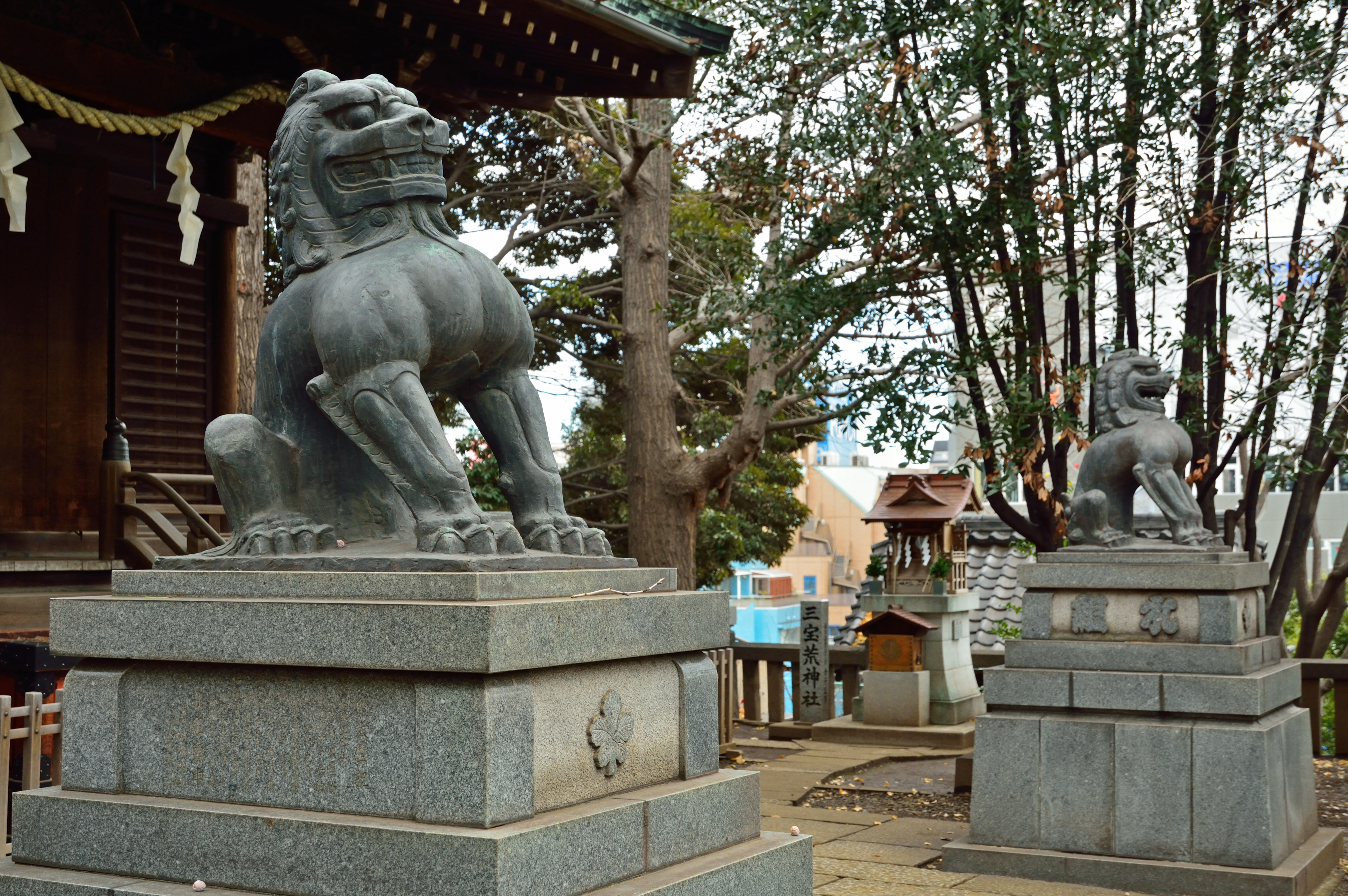The komainu statues of Meiji Jingu Shrine
Japan through The Five Srnses -Inquiries by Foreign Students
Updated on Jan 23 2017

Q.I still wonder why I saw no komainu lion-like guardian statues, a common sight at most other Shinto shrines.
A.The komainu statues of Meiji Jingu Shrine
At Meiji Jingu Shrine, no komainu statues are located within the precinct open to the general public, but the shrine has a pair of komainu statues at the naijin, or innermost part, of the honden building, the most sacred part of the shrine.
It was during the Edo period (1603-1867) when shrines began placing statues of komainu outside their honden buildings — either within the compounds in front of the honden or at the entrances of paths leading to the shrine. Up until then, shrines had kept komainu indoors. Komainu were seen as a form of “shinshi,” or “divine messenger,” inside the honden.
Today, komainu statues at shrines assume the role of guarding sacred places where deities are enshrined. Dating back to the Heian period (late eighth to late 12th centuries) komainu figures had been used in the Imperial Palace buildings to hold doors closed or keep carpets in place. Later on, shrines started putting them inside honden buildings. As mentioned earlier, during the Edo period, komainu statues were placed outside by the doors of the honden buildings or in front of haiden, the frontal sections of honden where visitors give their prayers, or by torii gates.
Meiji Jingu Shrine, dedicated to the souls of Emperor Meiji and his wife, Empress Shoken, was built in the Taisho era (1912-1926). Its honden, where the relevant deities are enshrined, was built in the Heian Shinto architectural style of “nagare-zukuri,” meaning “streamlined roof” style. It remains the most popular style of Shinto shrine across the country. Meiji Jingu Shrine continues to keep the paired komainu statues within the naijin part of the honden building, following the Heian tradition.

published in The Japan News on 23/1/2017
Yorio FUJIMOTO
Research
Modern History of Shinto, Shinto Edification, Sociology of Religion
Papers
Mirror and Honesty -Education for Human Nature in Shinto Virtues and Words-(2025/08/01)
Nezu Shrine Small Thought (Nezu Jinja Small Thought)(2024/12/30)

